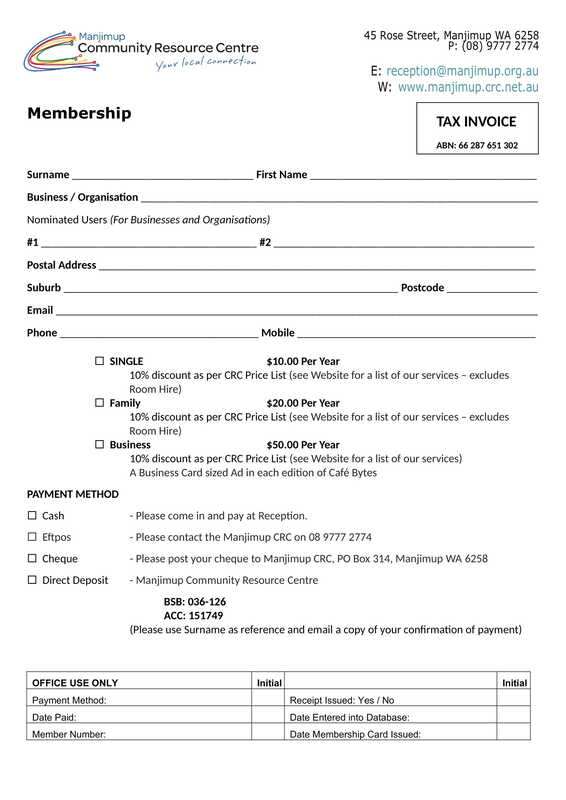Membership Packages
The Manjimup Community Resource Centre is a part of the West Australian Community Resource Network.
The Western Australian Community Resource Network is a Royalties for Regions Initiative.
We are also proud members of Link West.
The Western Australian Community Resource Network is a Royalties for Regions Initiative.
We are also proud members of Link West.
|
Disclaimer
The Manjimup Community Resource Centre is committed to quality service to its customers and seeks to ensure accuracy, currency and reliability of information and transactions provided over the internet, but this cannot be guaranteed. Accordingly, to the fullest extent permitted by law, the Manjimup Community Resource Centre and its officers and employees are released from liability (including in respect of negligence) for any loss, damage, cost and expense caused by use of or reliance on this website and the information contained on it. Manjimup Community Resource Centre has no control over the content of material accessible on any site that is referenced from this website. It is your responsibility to make your own decisions about the suitability, relevance, accuracy, currency, reliability and privacy practices of any external the websites. Copyright 2020 Unless otherwise stated, copyright in all materials on this website is the property of Manjimup Community Resource Centre. In addition to any fair dealings permitted under the provisions of the Copyright Act 1968, material on this website may be reproduced for research, study, private non-commercial use provided that Manjimup Community Resource Centre is acknowledged as the copyright owner and the material is not altered. The Manjimup Community Resource Centre cannot and does not grant any permission or authority in respect of the copyright of the materials appearing at third-party Internet sites, and strongly recommends that you refer to the copyright statements at those sites before making use of the materials. Enquires may be directed to manjimup@crc.net.au. |
© COPYRIGHT 2015. ALL RIGHTS RESERVED.








